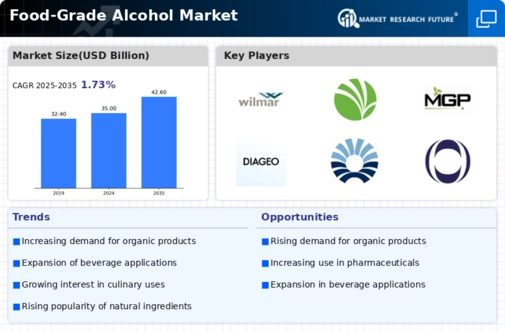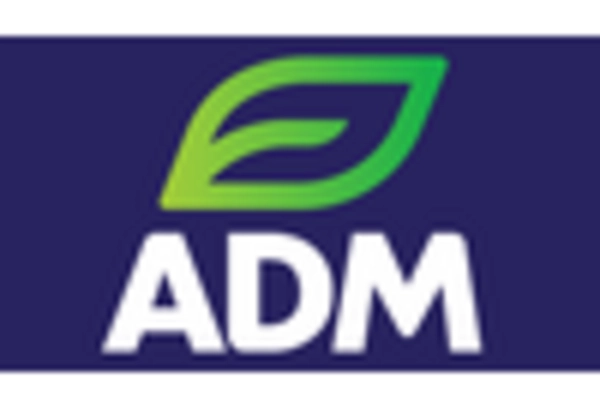Growth of E-commerce Platforms
The Food-Grade Alcohol Market is experiencing a transformation due to the rise of e-commerce platforms. Online retailing has become a vital channel for food-grade alcohol distribution, allowing consumers to access a wider variety of products from the comfort of their homes. Recent trends indicate that online sales of food-grade alcohol have increased by over 15% in the past year, reflecting a shift in consumer purchasing behavior. This growth in e-commerce not only expands market reach but also provides opportunities for niche brands to enter the market. As digital platforms continue to evolve, they are likely to play a crucial role in shaping the future of the food-grade alcohol market.
Expansion of the Beverage Sector
The Food-Grade Alcohol Market is significantly influenced by the expansion of the beverage sector, particularly in the craft and premium segments. The rise of craft breweries and distilleries has led to an increased demand for high-quality food-grade alcohol. Recent statistics indicate that the craft beverage market has seen a growth rate of around 10% annually, which directly impacts the food-grade alcohol market. As consumers gravitate towards unique and artisanal products, the need for diverse food-grade alcohol options becomes paramount. This trend not only enhances market dynamics but also encourages innovation among producers, fostering a competitive landscape.
Regulatory Support for Food Safety
The Food-Grade Alcohol Market benefits from stringent regulatory frameworks that promote food safety and quality. Governments worldwide are implementing regulations that ensure the safety of food-grade alcohol products, which enhances consumer confidence. These regulations often require rigorous testing and quality assurance processes, thereby elevating the standards within the industry. As a result, manufacturers are compelled to adhere to these guidelines, which can lead to increased production costs but ultimately fosters a safer market environment. The emphasis on compliance and safety is likely to bolster the food-grade alcohol market, as consumers become more discerning about the products they consume.
Rising Demand for Natural Ingredients
The Food-Grade Alcohol Market is experiencing a notable shift towards natural and organic ingredients. Consumers are increasingly seeking products that are free from artificial additives and preservatives. This trend is driven by a growing awareness of health and wellness, leading to a preference for food-grade alcohol derived from natural sources. According to recent data, the market for organic food-grade alcohol is projected to grow at a compound annual growth rate of approximately 8% over the next five years. This demand for purity and transparency in food products is likely to propel the food-grade alcohol sector, as manufacturers adapt to meet these evolving consumer preferences.
Increased Use in Culinary Applications
The Food-Grade Alcohol Market is witnessing a surge in the use of food-grade alcohol in culinary applications. Chefs and food manufacturers are increasingly incorporating food-grade alcohol into recipes for flavor enhancement and preservation. This trend is supported by the growing popularity of cooking shows and culinary arts, which emphasize the use of high-quality ingredients. Data suggests that the culinary segment of the food-grade alcohol market is expected to grow by approximately 6% over the next few years. This increased utilization in kitchens and restaurants is likely to drive demand, as consumers seek authentic flavors and experiences in their food.


















Leave a Comment